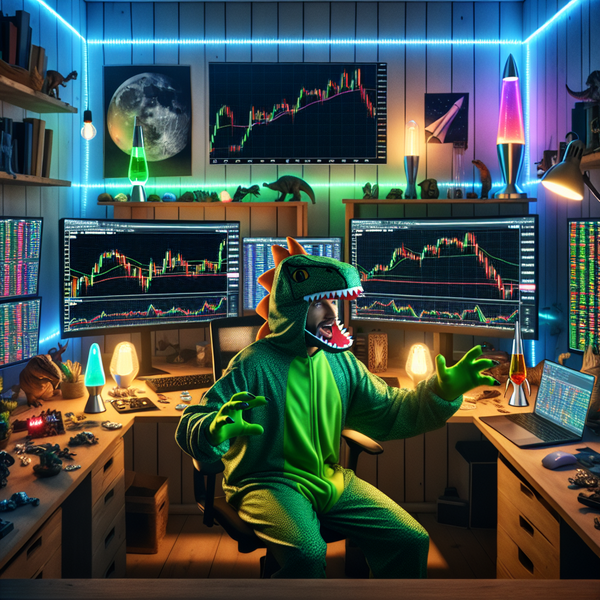How to Master Long Position vs Short Position Futures

If you want to excel in futures trading, understanding long position vs short position futures is essential. Picture yourself spotting a market opportunity, are you prepared to profit whether prices rise or fall? The skill to switch between long and short positions gives traders an edge over those who simply buy and hold. This isn’t just about knowing what is short selling or when to buy; it’s about building the confidence to act in any market scenario. These strategies play a critical role in both risk management and potential profit, especially in a fast-changing market.
Mastering both long and short positions means you’re better equipped to handle volatility and capitalize on trends. Why is this important? Futures allow for more flexibility than stocks think of oil futures, where prices can suddenly swing, or indexes that tumble. If you know the difference between long and short positions, and understand the right time to go long vs go short, you can minimize losses and maximize gains. Understanding the rules for safe position sizing is also essential to keeping your trading account healthy.
Whether you’re a beginner or leveling up your strategies, learning to trade long and short unlocks more opportunities. Want to know how futures contracts work in action, or find an account tailored for position trading? The basics covered here will show you when to use a long futures contract or try a short position in futures. Throughout this guide, you’ll find real-life examples, margin tips, and common pitfalls most traders face.
Key Differences of Long Position vs Short Position Futures
The futures market offers two powerful ways to trade: taking a long position or a short position. But what’s the real difference between the two, and why does it matter? The long vs short position debate isn’t just for advanced traders, it affects anyone dealing with futures, whether you trade oil, gold, or indices.
A long position in futures means you’re buying a contract because you expect the price to go up. For example, if you think gold prices will rise next month, you would open a long futures contract. The long position's meaning is simple: you profit if the market increases and lose if it falls. In contrast, a short futures contract flips the logic; you sell a contract anticipating the price will drop. This allows you to benefit from falling prices, which is the main idea behind what is short selling. Short position in futures contracts lets traders profit during downturns or when markets correct.
Let’s use a practical example. If oil is trading at $70 a barrel and you expect it to rise, going long means you buy futures at $70, hoping to sell higher. If price jumps to $75, your long futures contract gains $5 per barrel. But if you believe oil will fall from $70, you might enter a short futures contract, selling at $70. If prices drop to $65, you buy back for a $5 profit per barrel.
Knowing the differences between long and short positions, how each one is used, when to apply them, and what risks they carry, forms the foundation of every successful trader’s strategy in the short and long in trading world.

What Is Short Selling in Futures?
Short selling is a core concept in futures trading. So, what exactly is short selling, and how does it work in the context of futures? In simple terms, short selling, sometimes called going short or opening a short position, means you’re betting that a market price will go down. You “sell” a futures contract first, planning to “buy” it later at a lower price to pocket the difference. This is different from stocks, where you must borrow shares to sell short. In futures, contracts are standardized and easily bought or sold regardless of whether you own the underlying asset.
How a Short Futures Contract Works in Real Life
Let’s look at a real-world example to clarify how a short futures contract works. Imagine a wheat farmer who expects prices to drop before harvest. By selling a short position in futures contracts, the farmer locks in today’s higher price. If prices fall by the time the crop is harvested, the farmer buys back the contracts at a lower rate and keeps the profit, offsetting the loss they’d see when selling the actual wheat.
This example isn’t just for producers; speculators and funds also use the short position in futures. For instance, suppose a trader watches financial news and sees reports indicating that crude oil supplies are higher than expected, signal that prices might soon fall. The trader opens a short futures contract at $80 per barrel. A week later, prices drop to $75, allowing them to buy back at a profit.
The concept of go long vs go short applies here: the decision depends on market movements and individual outlooks. Unlike traditional stock markets, futures trading makes it easy to move in and out of short positions, often with lower costs and faster execution. Beginners sometimes ask, "Can you short futures anytime?" The answer is generally yes, if the market is open, you can enter either a long or short trade.
It’s also important to note the margin requirements, which act as collateral to ensure traders can cover potential losses. Resources like the CME Group’s education center offer more on how short vs long position dynamics work in different commodities and indices.
Short futures trades empower you to respond quickly to changing markets, hedge real-world risks, and create diverse strategies beyond simply buying and holding.

What is the Long Position in Futures Contracts?
A long position in futures is the most basic type of trade, but it’s also the foundation of futures markets. When you take a long position in futures, you buy a contract, expecting the asset’s price to rise before the contract expires. Whether it’s corn, S&P 500, or gold, the core idea is the same: buy low today, sell higher tomorrow.
Let’s break down the long position meaning. If you believe a major technology index will rise over the next three months due to strong earnings, you purchase a long futures contract. If your prediction is correct and the index climbs, you sell the contract for a profit. But if prices fall, losses mount. The long futures contract gives you exposure to upward price movements, with profits proportional to how much the contract’s value increases.
In practice, traders use long positions for speculation, hedging, and portfolio diversification. For example, a coffee producer expecting higher prices might lock in rates now, while a hedge fund could use long and short positions to balance risk. Knowing how a long position in futures contract fits your strategy is vital. Long and short positions complement each other, letting you tailor trades to market conditions.
Position trading often involves holding long futures contracts for weeks or even months. Success in these trades requires reading economic forecasts and understanding sector trends, making free courses like Coursera’s trading fundamentals helpful for new traders.
When to Go Long vs Go Short
Going long means you expect the price of an asset to rise. Traders typically go long during periods of bullish sentiment, when technical indicators confirm upward momentum, or when fundamentals suggest growth ahead. For example, if an economic report shows stronger-than-expected job growth, futures traders might go long in equity indexes, anticipating optimism to push prices higher. Technical signals such as higher highs and higher lows, strong volume on rallies, or a breakout above resistance are common cues that the market favors long positions.
By contrast, going short means you anticipate prices will fall. Traders use shorts during bearish conditions or when overextended markets show signs of weakness. A disappointing earnings report, dovish central bank policy, or deteriorating economic data can all trigger short opportunities. On the technical side, lower highs and lower lows, breakdowns below support, or bearish chart patterns often serve as signals. Shorting allows traders to profit in declining markets, but it also carries unique risks, since losses can theoretically be unlimited if prices rise instead of fall.
When to Use a Long Position in Futures
The decision to go long is based on analysis and conviction that prices will rise. Traders open a long position in futures if they see signs like bullish chart patterns, positive economic data, or strong sector news. For example, if a drought is likely to hurt corn supplies, you might buy a long futures contract to profit from the anticipated price jump. Similarly, stock market futures often rally before major corporate earnings seasons; traders long those contracts when sentiment turns positive.
When to Use a Short Position in Futures
Shorting comes into play when you believe a market is heading downward. This could be triggered by excess supply, weak earnings, or negative economic news. For example, if energy analysts forecast a lower demand for natural gas, traders may open a short futures contract to benefit from falling prices.
Timing is key for short positions in futures trades; the best opportunities often appear before the bad news is fully reflected in prices. Monitoring global events and using technical signals helps identify prime moments to act. Always be mindful of short-selling risks: if prices rise unexpectedly, losses can be quick and severe. Pairing both long and short positions as part of a broader position trading plan keeps your account balanced and resilient.
How Can You Short Futures?
Shorting futures is a straightforward process. Unlike short selling stocks, which often involves borrowing shares, a futures short position simply means selling a contract first. All you need is a brokerage account that supports futures trading, sufficient margin, and a clear trade idea.
To start, analyze the market for signs of a downturn. Let’s say you expect soybean prices to drop. Open a short position by selling a soybean futures contract. If the price falls as predicted, you can buy back the contract at a lower price and pocket the difference. Most trading platforms allow you to enter a short futures contract with just a few clicks, no need to own the underlying asset.
The question “Can you short futures in any market?” is common. Across commodities, stocks, indexes, and currencies, the answer is mostly yes. Futures exchanges are designed for both buyers and sellers to participate equally, making it easy to switch between long and short trades based on your analysis.
Always check margin requirements and trading rules before opening futures short positions. This protects your account from unnecessary risk and sudden market moves. For clear, step-by-step guides on choosing trading software, explore these recommended trading platforms that support all key futures markets and provide built-in tools for managing both long and short trades.
Common Mistakes New Traders Make With Long and Short Futures
Entering the futures world is exciting, but beginners often repeat common mistakes when dealing with short position vs long position trades. One of the biggest pitfalls is poor timing, rushing into a position based on news headlines instead of solid analysis. Jumping on trends without proper technical or fundamental confirmation can turn potential profits into fast losses.
Another mistake is misunderstanding how margin and leverage amplify both profits and losses. With futures, your exposure is much greater than your cash deposit, making risk management critical. Traders may enter a long position in futures contract believing a quick rebound is due, only to watch the market move further against them.
The Role of Margin in Long and Short Futures Positions
Margin is the backbone of all futures trading, whether you choose to go long or go short. Unlike stock trading, you don’t pay the full value up front. Instead, you deposit an initial margin, essentially a good faith deposit, to open a position. Both long and short positions require this margin, which is set by the exchange and your broker.
If the market moves in your favor, your account will show unrealized gains. If it moves against you, be prepared for margin calls, a request to add funds so you don’t risk liquidation. The required margin fluctuates based on the volatility and value of the underlying asset. For instance, margin for a short position in futures may increase during periods of uncertainty or high volatility.

How to Build a Balanced Position Trading Strategy
Developing a balanced position trading strategy means combining both long and short positions in your trading plan. This approach helps reduce risk and ensures you can adapt to any market direction. Start by analyzing broader economic trends, are we in a bull or bear market? After identifying opportunities, split your trades between assets likely to rise (go long) and those you expect to fall (go short).
A good position trading strategy also includes strict risk controls, like setting stop-loss and take-profit levels. This prevents large losses from erasing multiple small gains. For example, you might go long in tech futures on positive earnings signals while shorting commodities if supply increases are expected.
Real-World Examples of Long vs Short Futures Trades
Practical examples solidify understanding. Let’s start with a long futures contract: imagine you expect coffee prices to rise due to a poor harvest in Brazil. You buy futures at $1.20 per pound. Two months later, prices climb to $1.40. You sell, locking in a $0.20 profit per pound.
Now, consider a short futures contract: suppose a major oil-producing country announces a surge in output. Predicting a drop in prices, you short oil futures at $85 a barrel. Soon after, prices fall to $80, so you buy back the contracts, gaining $5 for each barrel traded.
Final Words on Position Trading
Long and short positions are powerful tools in futures trading. Approaching each trade with discipline and clear analysis helps avoid common beginner mistakes like poor timing or ignoring margin rules.
Balancing go long vs go short trades in a diversified portfolio creates resilience and opens new opportunities for profit. Stay informed with the latest economic data and trading psychology insights for ongoing improvement. Choosing the right trading platform and account structure is also essential, consider exploring more about position trading essentials for support, education, and community tips.
With practice, knowledge, and the right strategy, mastering position trading in futures can set you apart from the crowd and help you build real financial freedom.




